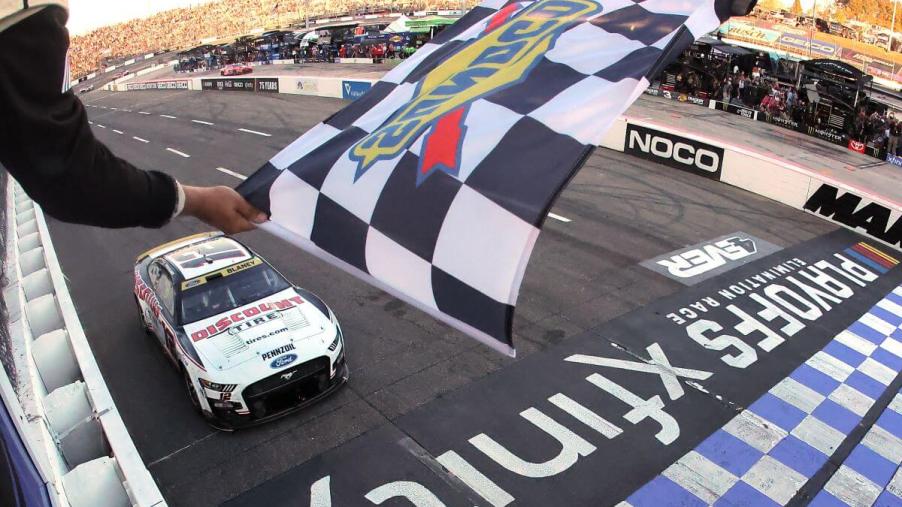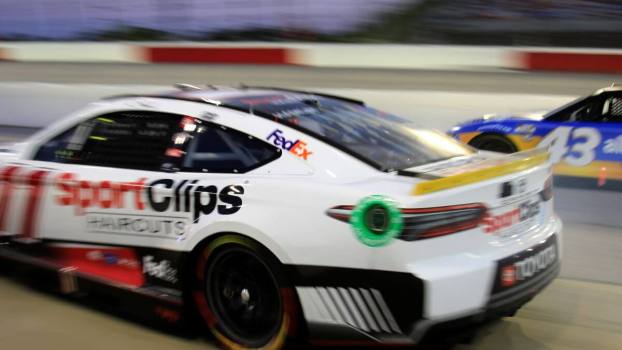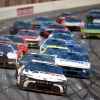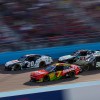
Racing Flags: Breaking Down Every Flag for NASCAR
The rules and regulations of NASCAR are continually evolving, perhaps more than any other high-profile motorsports series. However, even as the sport introduces new mandates, one constant has remained — the flags NASCAR uses and their meanings. For those new to the sport or established fans who might not know all the flags used by NASCAR and when they are shown, here is a rundown of every flag used by the sport and when each is displayed.
Types of NASCAR flags and when they are used
In all, NASCAR uses 15 flags and combinations of flags to control the race or to inform drivers of necessary information, according to Formula 1. Below are the flags and their use:
Green flag
The green flag effectively means “go,” as its use indicates the start of a qualifying or practice session, the beginning of the race, or the resumption of racing.
Yellow flag
The yellow flag indicates a caution in which drivers must slow down and follow the pace car. A crash, debris, weather, or other circumstances can cause the yellow flag to be displayed and the race to enter a slowed “caution” period.
Red flag
The red flag brings racing to a stop, and all cars are either required to park on the track or in the pit lane until racing resumes. A red flag may be displayed to allow safety and track crews to tend to a crash, track hazards, or when inclement weather forces officials to halt the race. NASCAR teams are prohibited from working on cars during a red flag period.
White flag
The white flag indicates there is one lap remaining in the race.
Black and white checkered flag
This flag indicates the race has concluded.
Green and white checkered flag
The green/white checkered flag marks the end of a “race stage.” NASCAR implemented stage racing in 2017, effectively cutting a race into three stages. The first two stages are typically about 25% of each of the total laps in the race, while the third stage is almost half of the race. Points are awarded to the top 10 finishing drivers at the end of the first two stages. Traditionally, the end of the stage brought out a caution period. However, NASCAR has adjusted the rule for 2023 to allow racing to resume as usual following the end of a stage at certain road courses.
Black flag
The black flag is shown to a driver when they have incurred an on-track offense or penalty, or when they must leave the race due to not maintaining a competitive speed. Drivers must return to the pit area after being shown the black flag, though they might be able to gain clearance from officials to rejoin the race after addressing the issue, causing them to be shown the black flag.
Black flag with crossed white lines
This flag indicates a driver has not returned to the pits within five laps of being shown the solid black flag and that their car is no longer being scored. This flag, though rare, typically includes a disqualification of the car/driver.
Blue flag
The blue flag is only used during NASCAR races on road courses and warns drivers of potential hazards that may be difficult to see while the race remains under green flag conditions. This could include a car being off the racing surface.
Blue flag with a yellow stripe
This flag is shown to drivers when the leaders are approaching behind them.
Yellow and red striped flag
Another road-course-only flag. This flag informs drivers there is debris on the track ahead.
Red flag with a yellow stripe
This flag is displayed at the entrance of the pit lane instead of with the flagman over the start/finish line and indicates that the pit lane is closed. This flag is shown with under two laps remaining in a race stage (when the pit area is closed) or when the field is brought together behind the pace car during a caution period.
Red and black flags together
The red and black flags displayed simultaneously mark the end of a practice or qualifying session.
Two checkered flags together
The use of dual black/white checkered flags informs drivers the race has reached its halfway point. The halfway point is significant as the race is deemed “official” once half the laps have been completed. If weather or another circumstance should stop the race, officials can choose not to resume the race, and each car’s position at the time the race was stopped will be their official finishing position.
Green-white-checkered flag sequence
The display of the green, white, and then black/white checkered flag on consecutive laps is the sequence used during NASCAR “overtime” or a “green-white-checkered” finish. If a caution is brought on late in the race, or it will take more time than the remaining laps to clean up an incident, NASCAR may implement this scenario in an attempt to finish the race under green flag conditions.
This results in a two-lap “shootout” to end the race. Racing resumes with the green flag, the white flag indicating one lap to go is shown the next lap, and the checkered flag ends the race on the subsequent lap. If a caution occurs before the white flag has been displayed, another green-white-checkered finish will be attempted, up to three attempts in total.
How do NASCAR flags and their use differ from F1?
NASCAR and Formula 1 use many of the same flags, though the meaning behind some of the flags is altered between the two racing series.
For instance, F1 uses the white flag to indicate to a driver there is a much slower car ahead, and it’s usually displayed during practice sessions. A yellow flag does indicate “caution” in F1, but not in the same sense as NASCAR. A single yellow flag in F1 might only be displayed for one section of the track, while in NASCAR, the entire field must slow. The whole field slowing in F1 is indicated by double yellow flags or a “code 60” purple/white flag.
Formula 1 also uses a solid black flag, but its use is quite rare and indicates a driver has been immediately disqualified from competition. Additionally, Formula 1 uses a black flag with an orange circle to indicate a car must return to the pits because it is deemed unsafe to compete. This flag is not used in NASCAR.
Otherwise, NASCAR and F1 use the same flags, and their meanings are generally similar. In both sports, the red flag brings the race to a halt, and the black/white checkered flag marks the end of a race.




